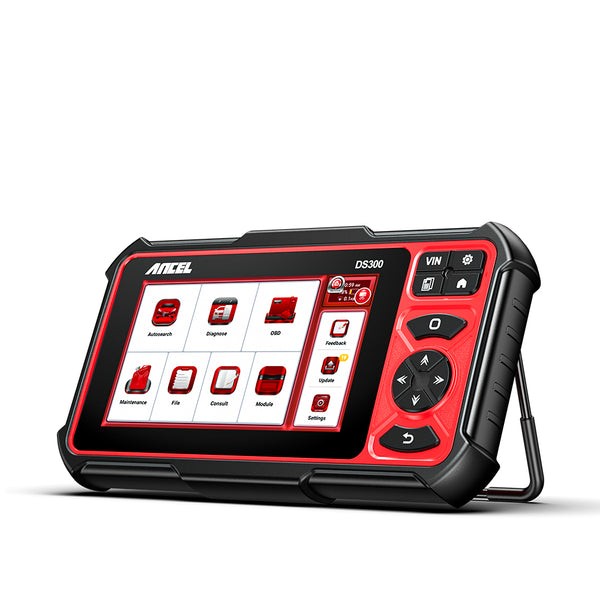Dealing with car troubles often involves deciphering those pesky dashboard lights. When it comes to vehicle diagnostics, understanding and clearing OBD2 codes is a crucial skill for any car owner. Among these, stored OBD2 codes, sometimes referred to as permanent codes, can be particularly persistent. These codes linger in your vehicle’s Engine Control Unit (ECU) even after the initial problem seems to be resolved.
This guide, brought to you by the experts at techcarusa.com, will provide a detailed, step-by-step approach on how to effectively clear stored OBD2 codes, ensuring your vehicle runs smoothly and efficiently. We’ll go beyond just clearing the light, focusing on proper diagnosis and resolution for lasting results.
Understanding Stored OBD2 Codes
Stored OBD2 codes, or permanent diagnostic trouble codes (DTCs), are a critical component of your vehicle’s On-Board Diagnostics system. Introduced as part of emission control standards, these codes are designed to ensure that significant vehicle issues are not simply ignored or masked.
Unlike temporary or pending codes that might vanish after a transient issue corrects itself, stored codes remain firmly lodged in the ECU’s memory. They are specifically designed to stay until the system verifies, through a series of drive cycles, that the problem is genuinely fixed. This persistence is why simply disconnecting your car battery or using a basic OBD2 scanner might not be sufficient to clear them.
It’s vital to recognize that stored OBD2 codes aren’t just warning lights; they are indicators of underlying problems that can affect your vehicle’s performance, fuel efficiency, and emissions. Addressing them promptly and correctly is key to maintaining your car’s health and avoiding more significant issues down the road.
Step-by-Step Guide to Clear Stored OBD2 Codes
Clearing stored OBD2 codes requires a systematic approach, focusing first on identifying and resolving the root cause of the problem. Here’s a detailed guide to help you through the process:
1. Diagnose and Fix the Underlying Issue
Before attempting to clear any stored OBD2 codes, the most crucial step is to accurately diagnose and fix the problem that triggered the code in the first place. Stored codes are not arbitrary; they signal real malfunctions that need attention.
Utilize a reliable OBD2 scanner to retrieve the specific code and understand its meaning. Resources like ANCEL’s range of advanced diagnostic tools can be invaluable in pinpointing the exact issue. Once you have the code, conduct the necessary repairs or replacements. This might involve fixing a faulty sensor, replacing a worn component, or addressing an engine misfire.
 Car Scanner | ANCEL
Car Scanner | ANCEL
Alt text: ANCEL DS300 professional car scanner diagnosing OBD2 codes.
2. Perform an OBD2 Drive Cycle
After you’ve confidently addressed the underlying issue, the next step is to perform an OBD2 drive cycle. A drive cycle is a predefined series of driving conditions that your vehicle must complete to allow its onboard computer to verify the repair. This process involves a combination of idling, acceleration, deceleration, and cruising at various speeds.
The exact steps for a drive cycle can vary depending on your car’s make and model. Consult your owner’s manual or a reputable online resource for the specific drive cycle procedure for your vehicle. Generally, a drive cycle includes:
- Cold Start: Begin with a cold engine. Start the engine and let it idle for a short period.
- Low-Speed Driving: Drive at lower speeds (25-45 mph) with gentle acceleration and deceleration, including stops and idling.
- Highway Speed Cruising: Gradually increase speed to highway speeds (50-60 mph) and maintain a steady speed for several minutes.
- Deceleration: Allow the vehicle to decelerate naturally without applying the brakes as much as possible.
Successfully completing the drive cycle gives the ECU the opportunity to re-evaluate the system. If the repair was effective, the ECU should recognize this and clear the stored OBD2 code.
3. Utilize an Advanced OBD2 Scanner for Code Clearing
If the drive cycle alone doesn’t clear the stored OBD2 code, you may need to employ a more advanced OBD2 scanner. Basic scanners might only read and clear temporary codes, whereas clearing stored or permanent codes often necessitates a scanner with specific functionalities.
Look for OBD2 scanners that explicitly support Mode $04 (Clear/Reset Emissions-related Diagnostic Information) and Mode $0A (Permanent DTCs). ANCEL offers a range of scanners, including Bluetooth-enabled options, that provide these advanced capabilities.
To clear the stored code using a scanner:
- Connect the Scanner: Plug your OBD2 scanner into your vehicle’s diagnostic port. This port is typically located under the dashboard on the driver’s side.
- Turn Ignition ON: Turn the ignition key to the “ON” position. This powers up the car’s electronics without starting the engine.
- Navigate to Permanent DTCs: Use the scanner’s menu to locate the option for reading or clearing permanent DTCs. This might be labeled as “Permanent Codes,” “Mode $0A,” or similar.
- Clear the Code: Follow the scanner’s on-screen prompts to initiate the code clearing process. Some advanced scanners, like ANCEL professional models, might guide you through additional steps or recommend performing another drive cycle after clearing.
4. Consider an ECU Software Update
In certain scenarios, a stored OBD2 code might persist due to outdated ECU software. Car manufacturers periodically release ECU updates to address software glitches, improve vehicle performance, and refine diagnostic routines. These updates can sometimes resolve issues preventing codes from clearing.
- Check for ECU Updates: Visit your car manufacturer’s official website or contact a dealership to inquire about available software updates for your vehicle’s ECU.
- Perform the Update: Follow the manufacturer’s instructions for updating the ECU software. This might involve a dealership visit or using specialized software and tools.
Updating your ECU software can rectify software-related anomalies that hinder code clearing and ensure your vehicle’s diagnostic system operates correctly. You can also read more about ECU issues and testing on ANCEL’s blog.
5. ECU Reset as a Last Resort
Resetting the ECU should be considered as a final option if all other methods have failed. This process erases all stored data in the ECU, including learned settings and adaptations.
- Disconnect Battery: Disconnect the negative terminal of your car battery.
- Wait: Allow the vehicle to sit for at least 15 minutes. This ensures that any residual electrical charge dissipates, effectively resetting the ECU.
- Reconnect Battery: Reconnect the negative battery terminal.
- Perform Drive Cycle: After reconnecting, start the vehicle and perform a complete OBD2 drive cycle. This allows the ECU to relearn necessary settings and recalibrate systems.
While an ECU reset can force the clearing of stored codes, it’s important to be aware that it may also temporarily affect vehicle performance as the ECU relearns optimal operating parameters.
6. Seek Professional Mechanic Assistance
If you’ve diligently followed all the steps and the stored OBD2 code remains stubbornly present, it’s advisable to consult a professional mechanic. Some stored codes can be challenging to clear without specialized diagnostic tools, in-depth knowledge, and experience. A qualified mechanic can conduct a thorough diagnosis, pinpoint any persistent issues, and take the necessary steps to clear the code effectively.
The Importance of Clearing Stored OBD2 Codes
Clearing stored OBD2 codes is more than just turning off a warning light on your dashboard. These codes play a vital role in your vehicle’s overall health, performance, and emissions compliance. Ignoring stored codes can lead to several negative consequences:
- Emissions Test Failure: Stored OBD2 codes, especially those related to emissions systems, can cause your vehicle to fail emissions tests. This can result in fines, registration denial, and the need for mandatory repairs.
- Reduced Fuel Efficiency: Some stored codes indicate problems that directly impact your car’s fuel economy. Addressing these codes can improve your MPG and save you money on fuel costs.
- Potential Engine Damage: Neglecting stored codes can sometimes mask or exacerbate underlying issues that could lead to more severe damage to your engine or other critical systems, resulting in costly repairs down the line.
Preventing Stored OBD2 Codes in the Future
Prevention is always better than cure. To minimize the occurrence of stored OBD2 codes, consider these proactive maintenance tips:
- Adhere to Regular Maintenance Schedules: Follow your vehicle manufacturer’s recommended maintenance schedule diligently. Regular servicing helps keep all systems in optimal condition and prevents many issues that trigger OBD2 codes.
- Address Issues Promptly: Don’t ignore warning signs or symptoms of vehicle problems. Address any irregularities as soon as they arise to prevent them from escalating and potentially triggering stored codes.
- Use Quality Replacement Parts: When repairs are necessary, opt for OEM (Original Equipment Manufacturer) or high-quality aftermarket parts. Quality components are more reliable and less likely to cause issues that could lead to OBD2 codes.
Final Thoughts
Clearing stored OBD2 codes requires a methodical approach, starting with accurate diagnosis and repair, followed by appropriate clearing procedures. By understanding the nature of stored codes and following the steps outlined in this guide, you can confidently address these issues, maintain your vehicle’s health, and ensure it operates efficiently and complies with emissions standards. Remember, if you encounter difficulties, don’t hesitate to seek professional help to ensure the job is done right.
FAQs
Can a stored OBD2 code affect my car’s warranty?
Yes, a stored OBD2 code, particularly if it’s related to a component covered under warranty, could potentially affect your car’s warranty. It is crucial to address the issue promptly to avoid any complications with warranty claims.
Can a stored OBD2 code cause my vehicle to go into limp mode?
In certain situations, a stored OBD2 code can indeed trigger your vehicle to enter limp mode (reduced power mode). This is a safety mechanism to prevent further damage by limiting engine power until the underlying problem is resolved.
Can I clear a stored OBD2 code without driving the car?
Generally, clearing stored OBD2 codes effectively often requires performing a drive cycle to allow the ECU to verify the repair. While some basic scanners might offer a “clear codes” function without a drive cycle, the code may reappear if the underlying issue isn’t truly resolved in the ECU’s evaluation.
